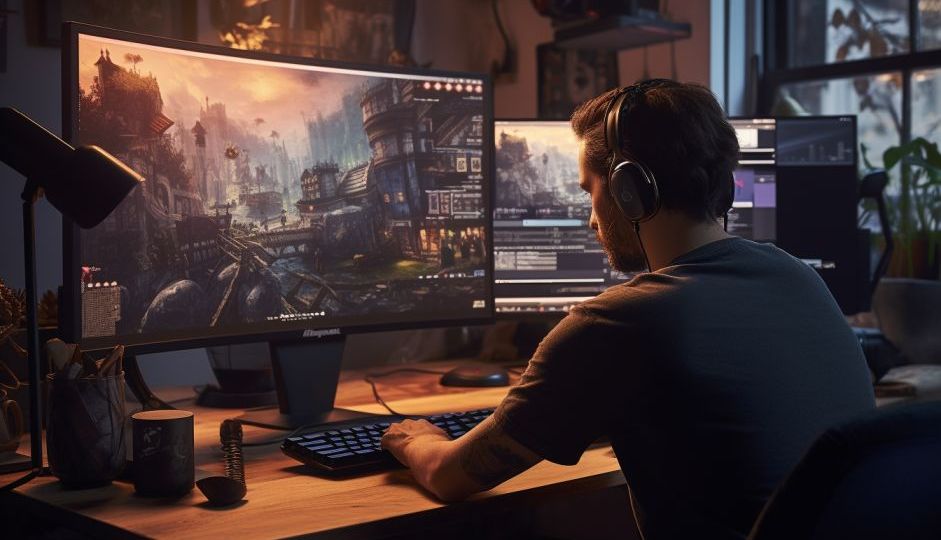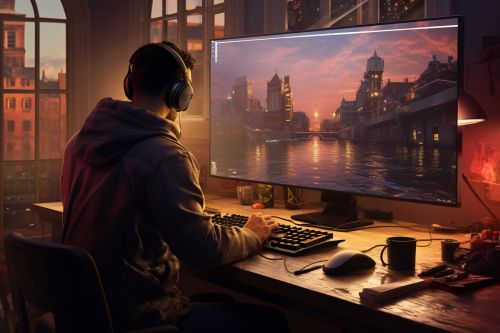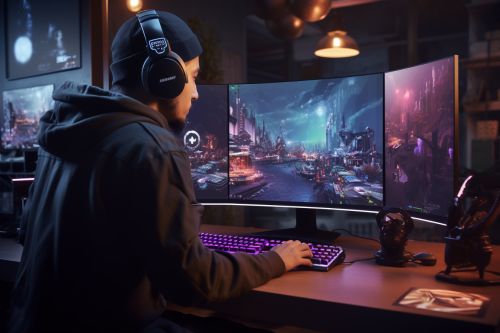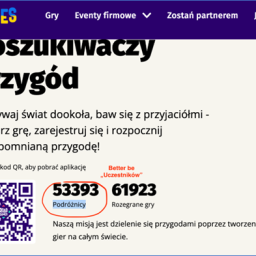

For game developers, localisation is an important consideration when creating a global product. It allows for a wider audience reach and improves the overall gaming experience for non-English speakers. With the rise of mobile and online gaming, a diverse international market has become more achievable.
Successful localisation goes beyond text translation. It involves adapting cultural references, graphics, and user interfaces to resonate with different audiences. This cultural sensitivity makes the game feel natural and engaging to players from various backgrounds. As gaming technology evolves, the potential for localised games to captivate a worldwide audience grows.
Contents
Do I need to translate my game into 20 languages?
When it comes to game development, one question often arises whether you should translate your game into multiple languages. With today’s global market and diverse player base, it seems smart to make your game accessible in different languages. However, this decision should not be taken lightly, as it can significantly impact your game’s success and your overall budget.
Start with determining if translating your game into many languages is really necessary. Here are some factors to consider when making the decision.
Target audience
Who are you trying to reach with your game? If your game caters to a specific demographic that speaks one primary language, then it may not be necessary to translate it into another language. However, if your target audience is global or diverse, by doing so, you will reach a wider audience and increase your game’s popularity.
Genre of the game
Some genres, such as strategy or simulation games, have a more dedicated player base that is willing to play in their non-native language. On the other hand, games with heavy story elements or dialogue require translation for a better player experience.
Budget
Translating your game into many languages is costly. It requires hiring professional translators, localisation experts, and voice actors for each language. Before deciding to translate, consider your budget and how much you are willing to invest in the process. It may not be financially feasible for smaller indie game developers to localise the title into multiple languages. Keep in mind that translating your game is a lengthy process, so plan ahead and allocate enough time and resources.



What languages are worth localising your game into?
When choosing which languages are worth localising your game into, you need to consider market potential and cultural relevance. Think if you are targeting specific regions or aiming for a global release. This will pre-define your approach.
French
There are around 320 million French speakers (according to Rosetta Stone). The gaming market in France is the 7th in the world, with a projected revenue in 2023 of 3,454 million USD. The number of users amounts to 15.9 million gamers (according to Statista).
Localising games into French extends reach outside France to Belgium, Monaco, Switzerland, Canada, and several African nations, e.g., Côte d’Ivoire, Benin or Morocco. This broad geographical spread offers access to diverse and culturally rich gaming communities. The historical influence of French culture in various parts of the world enhances the appeal of games localised in French, potentially increasing their marketability.
Italian
Italian is used by 63 million people, mainly in the Italian Peninsula and the United States (according to Babbel). The local gaming market is expected to increase its revenue to 2,158 million by the end of 2023 (according to Statista).
Italian, predominantly used in Italy, San Marino, and parts of Switzerland, makes the game accessible to gamers with limited English proficiency in these regions. Italy’s position as the world’s 10th largest gaming market makes it a strategic choice for developers. Additionally, the country’s rich artistic heritage offers unique thematic inspiration worth using.
German
There are about 97 million speakers of this language in the world (according to Worlddata.info). Expanding into the German-speaking market, which includes Germany, Austria, Switzerland, Luxembourg, and Liechtenstein, is beneficial for game developers. Those regions have a strong tradition of gaming. The community values high-quality localisation.
Spanish
Spanish is the second most spoken language in the world, with over 496 million native speakers across different countries (according to Rosetta Stone). It is also one of the official languages of multiple international organizations, such as the United Nations and the World Trade Organization. This widespread use makes it an ideal language to localise your game into.
There are over 350 thousand million Spanish-speaking internet users. They constitute almost 8% of the world’s share (according to Optimational). Many of them are avid gamers.
Simplified Mandarin
There are an astonishing 1.118 billion speakers of Mandarin around the world (according to Langoly). The analysis conducted in the local game industry suggests that the revenue will reach 57 billion by 2027. By then, it will be around 730 million gamers playing in this language (according to GamesIndustry.biz).
While highly receptive to localised games, the Chinese gaming market demands specific adaptations due to unique digital ecosystems. The developers need to consider the absence of the Google Play Store and the prevalence of local Android stores. Translating into Simplified Chinese leads to substantial revenue, given China’s massive population. Understanding and integrating regional cultural elements and trends boosts the success of this market.
Brazilian Portuguese
Localising games into Brazilian Portuguese taps into a vast market, reaching a substantial portion of the Latin American continent. Over 214 million people speak this language (according to Tomedes). Brazil’s unique cultural context makes localisation a powerful tool for engaging with this large audience. This approach opens doors to a region with growing digital infrastructure and gaming interests.
Emerging markets
The gaming industry is currently experiencing a notable upswing in emerging markets: Latin America, Africa, and the Middle East. These areas are distinguished by their youthful populations with access to modern technology.
Latin America, with its strong inclination towards mobile gaming, is becoming a hotspot for game developers. This region’s enthusiasm for digital entertainment creates a fertile ground for localised gaming content. In Africa, the gaming industry is driven by a young, tech-savvy population and increasing access to affordable PCs, consoles, and smartphones.
The Middle East is another emerging market with a vast potential for the gaming industry. Its considerable investment in digital infrastructure, coupled with a high demand for entertainment content, makes it an attractive market.
Additionally, the gaming market of South Korea stands out in the global arena. Known for its advanced digital infrastructure, the country has become a leader in both game development and consumption, particularly in MMORPGs and eSports genres.
These emerging gaming regions present new audiences for existing game titles and the potential for the development of new games tailored to their gaming habits.



Video game localisation process based on revenue model and genre
The success of game localisation is influenced by the revenue model (ads vs. in-game purchases) and the popularity of the genre in the target region. If a game’s revenue is ad-based, it is crucial to localise for regions where similar game genres achieve high download numbers. Genres like Hyper Casual, Action: Arcade, or Puzzles may perform well in German, French, or English-speaking regions like the US, UK, and Australia.
Conversely, if the revenue relies on in-game purchases, it is best to target regions where players frequently make such purchases. MMORPGs or Party Battler games succeed more in the Korean, Japanese, Chinese, and Taiwanese markets. To establish the most beneficial option, consider platform-specific data.
Competitor’s analysis
Understanding the competitive environment in potential localisation regions is the first step. It is not always beneficial to enter markets with intense competition or those dominated by game development companies with larger localisation budgets. Sometimes, focusing on less competitive markets, like Arab-speaking regions or smaller European countries, gives more profit. Analyse competitors’ localisation efforts to reveal gaps or missed opportunities, such as failing to meet local expectations.
The most demanded languages for the game translation process
The App Store is dominated by a few key languages aside from English. Spanish, French, Italian, German, Portuguese, Japanese, Korean, and Simplified Chinese stand out as the most supported languages. LocalizeDirect’s analysis reveals that these languages, along with Russian and Polish, make up approximately 80% of the total word count across 48 languages analysed in mobile games.
Historically, the FIGS languages (French, Italian, German, and Spanish) have been central to game localisation. Their dominance has decreased from around 40-45% to about 35% due to the emergence of new languages in the market. Despite this, localising into FIGS remains a strategic choice, especially for accessing mature markets with high revenues and purchasing power.
Markets in BRIC countries (Brazil, Russia, India, and China), which collectively represent about 40% of the world’s population, are rapidly emerging as significant players in the gaming industry. The CJK group (China, Japan, and Korea) is predicted to be a major trend. This shift indicates a need for game developers to diversify their localisation strategies to include these emerging markets.
Game localisation is the key to global game revenues
Choosing the right languages for video game localisation is a strategic decision. It greatly enhances a game’s global reach and success. The process begins by understanding the player preferences and market dynamics. By carefully selecting their audience, game developers unlock new audiences, increase engagement, and drive higher revenues. The future of gaming is increasingly global. Thoughtful localisation will tap into the full potential of the worldwide market.
If you are a game developer looking for a trustworthy translation agency, stop searching. At Skrivanek, we have experience working on many localisation projects in the most popular languages. Contact us to find out more about our work.
Images generated by AI.















